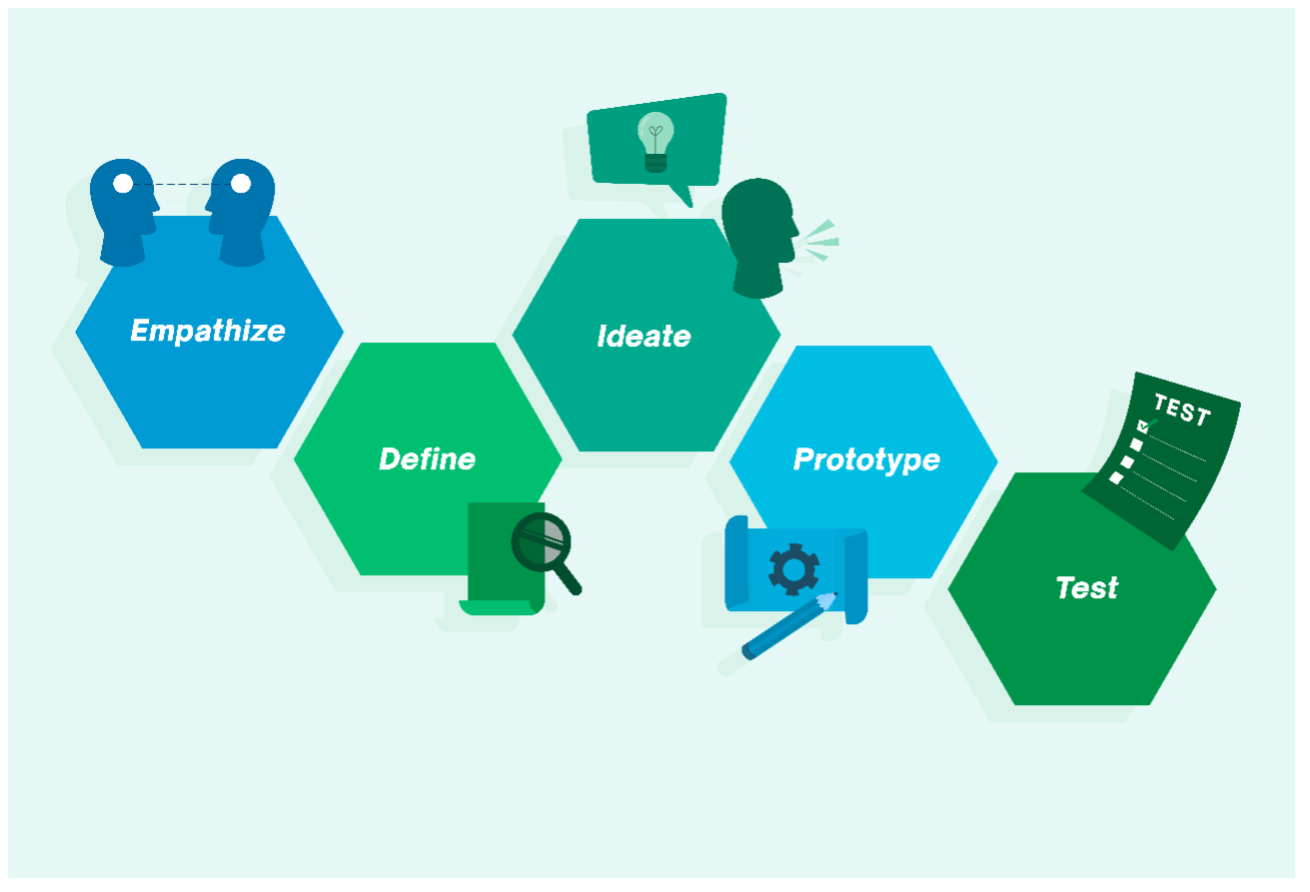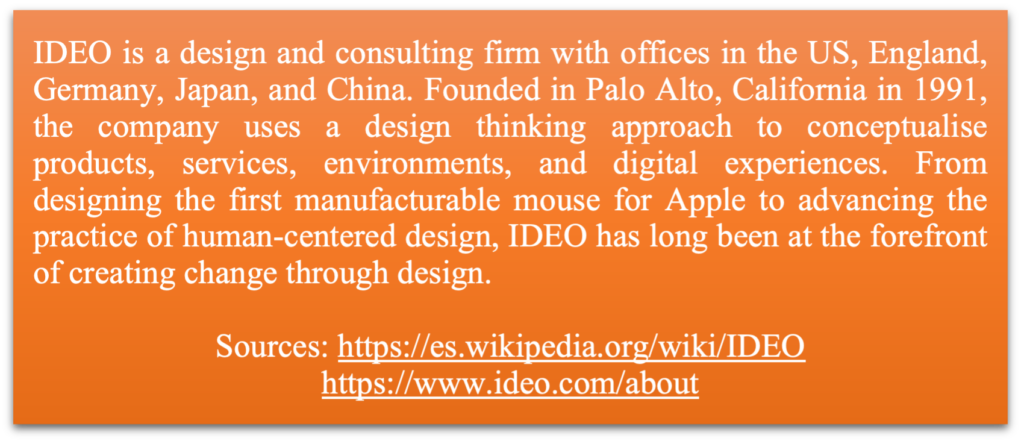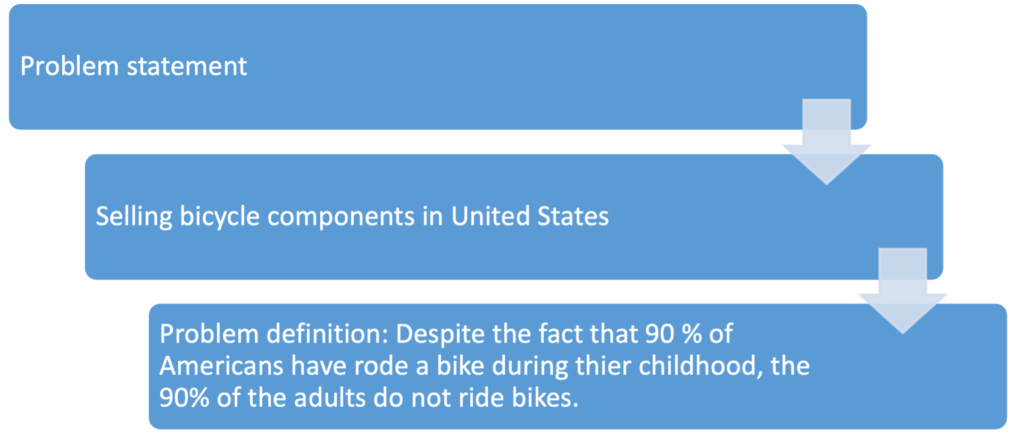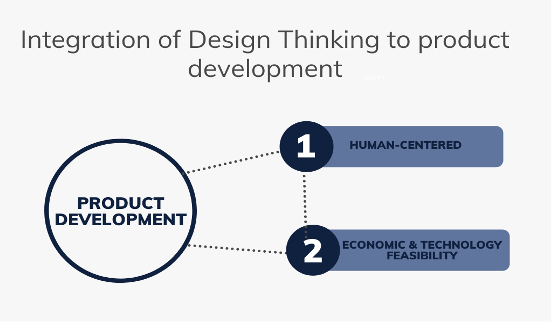Design thinking is an interactive and non-linear process that contains five phases:

It lets to challenge assumptions and to tackle problems by developing empathy with the target users. Traditionally, design thinking appeared as a disruptive methodology that had a clear idea: questioning everything and challenging assumptions. Later, the discipline has become familiar, and it is applied in different contexts.
From one side, the tradition of the design appears late within the history of architecture, art, and engineering. It reflected the perceptions about the paper of the new industrial society and the development of mechanical engineering (Pelta, 2013). New ideas were emerging such as shapes, functions, materials, colors, typography, and graphics hoping to understand new ways of approaching design channels of the new century. In the book, “The Sciences of the Artificial” (1969) Herbert A. Simon approaches the profile of a designer as a ¨problem solver¨. In the words of Herbert A. Simon:
¨Everyone designs who devises courses of action aimed at changing existing situations into preferred ones¨. (Ibid.,p. 130).
With postmodernity, the designer had to take consciousness of their influence and impact on society and their relationship with culture (Pelta, 2013). Hereby, it was necessary to re-think the possible paths the discipline was experiencing, and here it was where human factions appeared into the equation. As mentioned before, the new design appears to have the center of the users transitioning from designing objects to designing experiences.
1.1 Riding bikes in America
In the book Change by Design, how design thinking transforms organizations and inspires innovation, Brown (2009), opens the first chapter with a real case study of the principles of design thinking. We will explore this case study and how the impact of design thinking can change customer behavior.
In 2004 Shimano, a leading Japanese manufacturer of bicycle components was struggling to sell high-end road racing and mountain bike segments in the United States. The company IDEO was invited to explore which was the problem and study which were the viable solutions. IDEO came with a team of an interdisciplinary team of designers, behavioral scientists, marketers, and engineers whose task was to identify barriers to the project (Brown, 2009).

The first phase consisted in identifying what was the problem about? A common idea would have been to focus on the high-end market. But instead, they tailored the problem in a slightly different way:

The definition of the problem was followed by spending time with consumers, and they discovered that nearly everyone had good experiences and memories of being a kid on a bike but many of them do not use a bicycle anymore. The factors that appeared to constrain the riding process were:
- Complexity and excessive cost of the bikes.
- Accessories
- The danger of cycling on roads not designed for bicycles
- Demands to maintain a sophisticated machine that might be ridden only on weekends. Bikes were left in the garages with a broken wheel or cable (Brown, 2009).
After this human-centered approach, the solution ideated was ¨coasting bikes¨. The bikes remembered by many were built more for pleasure than for sport, with many features such as comfortable paddle seats or no cables along with the frame and last but not least incorporating sophisticated engineering with an automatic transmission that shifts the gears as the bicycle gains speeds or slows (Brown, 2009).
For further information about this case study, please consult the following link: https://www.dexigner.com/news/15345
As we could learn, the solution came with a human-centered approach which took the whole experience of riding bikes. It allows the teams to come up with an idea that embraced the complexity of designing a new product with the actual purpose and the needs of the people. So far, the case study appears to be a lineal solution where the problem is identified, and the solution came to be the ¨right one¨. However, the application of design thinking is a non-linear process that re-thinks possible solutions because of meaningful insights provided by our users. That means that a prototype might come back to the idea lab from where it comes from to reconceptualize other patterns to address a more interesting are meaningful solution.

As described by Tim Brown, this iterative approach might extend the time it takes to get an idea into the market, although a team that visualizes and understands what is happening will not feel bound to take the next logical step along an ultimately unproductive path (Brown, 2009).
Task 1: Answer the following statements in the forum.
- Describe in which ways CSE could benefit from Design Thinking principles
- Explain three examples of how a good design has answered societal needs. For example, suitcases with wheels have improved the mobility and transportation of heavy suitcases. Therefore, avoid lifting heavy weights while traveling.
- Share one example of ¨Great Design¨ and the other of ¨Bad Design¨ and explain the differences between them.